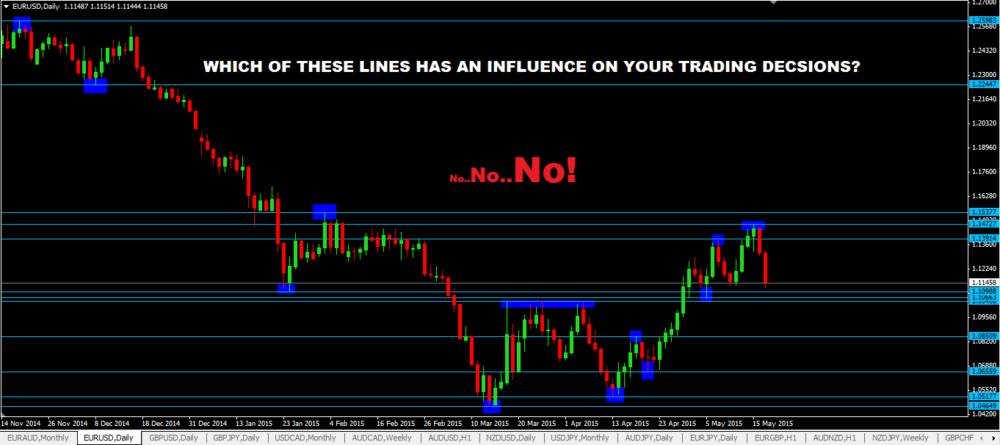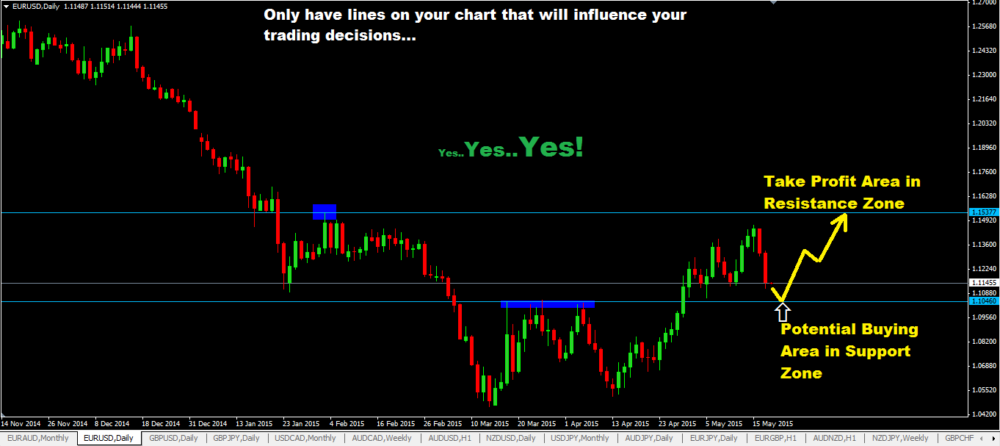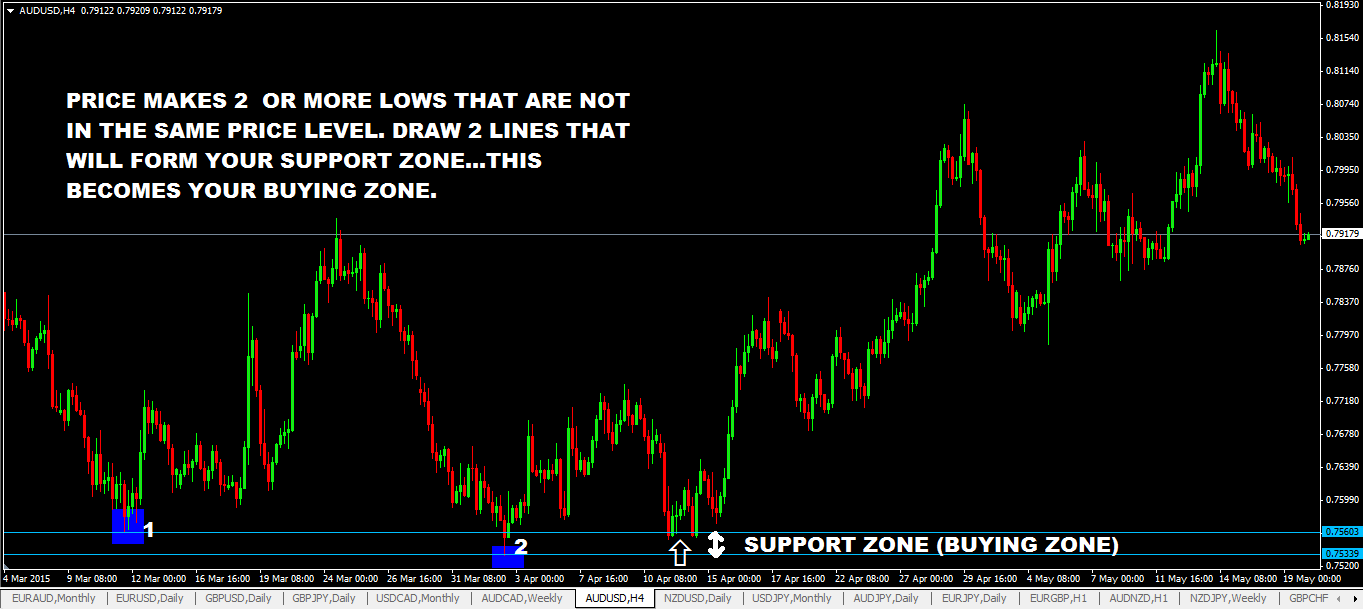There are Forex traders that find it a bit difficult to mark and identify support and resistance levels on the charts.
And even if they find these levels, how they mark these support and resistance levels on their trading charts are not good at all…because of 2 things they do not do correctly.
Let’s cut to the chase: support and resistance levels are not lines drawn in concrete, which means they do get intercepted and broken sooner or later.
That is the nature of any market: price is always moving.
I have seen 2 mistakes that people are making when drawing support and resistance. There are probably more mistakes but these 2 are obvious.
OVERDOING IT – Trading Levels As Fill In The Blanks
Don’t go over your trading charts marking every pivot level with lines like a madman.
The fact is that many of the lines you are drawing have no value in terms of future price action. You must accept that due to the sheer amount of traders, we often seen random movement in the market.
It’s random on the large scale but for each trader, the are doing something for a reason.
The questions you should be asking are these:
- why do I need this line?
- do I need it to trade off it when price hits that line?
- do I need this line as an awareness that if price hits and reverses from there, it can eat my profits up so I should be locking in profits as price gets closer to his line?
- do I need because it shows me that its a resistance level or support level from a larger timeframe like the monthly, weekly or the daily?
You should never be drawing any lines on your chart at all if that is not going to influence your trading decisions.

Now, looking at EURSD chart on a technical point of view, I see that it is in an uptrend on the daily time frame. But now the price is heading down. So really, what you and I should be looking for a potential support zone/level/area where price may bounce back up from.
Don’t forget that each level is potential because we can never know if a zone supports price until it does.
Now, when I remove all the other lines that I do not really need, you can see what I am talking about on the chart shown below. This is the same chart as above but I have only 2 lines that I need for making my trading decision IF price goes down and hits that “potential” support level where I’ve identified.

See how clean the chart is now?
You shouldn’t be marking levels that hinder market analysis.
Only mark levels on your chart if these levels are going to impact your trading decisions now or in the near future.
For example, there’s a major support level which can be seen on the monthly time frame and right now the price is about 100 pips away from hitting that support level and you see that this may present buying opportunity when price hits that support level.
You may also have support and resistance lines drawn on the daily chart and the 4 hr charts plus the 1 hr chart….but these lines are only relevant if you are going to use them for trade management as well as take profit target zones based on the trading setup in the monthly time frame.
If you will not use these lines, then they will be irrelevant in the overall scheme of things because you are trading off the larger support and resistance lines drawn in the monthly time frame. (You do not need them for making your trading decisions).Its the monthly support line that’s you are interested in.
#2 – TOO PRECISE – Draw The Lines With A Crayon
There’s no perfect support and resistance levels which means that you are never going to get the highs and lows of candlesticks to line in a straight line head to head or tail to tail.
How does this happen?
- Price hits usually 2 or 3 highs within the same price zone/level (forms resistance zone) and falls back down or price hits 2 or 3 lows and forms a support zone and rises back up.
- You will see price hit the support resistance levels and break it and go up by some distance before coming back down or it will just go up and be short by a few pips or more from touching the resistance line and it will start to fall back down.
Yes, there MAY be times when it will be perfect. Price will go exactly to the resistance level and once it hits it, it drops back down: this is a textbook example, but does not happen frequently.
So how would draw a support or resistance lines in situations like these? There is not clear cut answer and some traders will tell you that you need to draw a line of best fit.
For me, if there are 2 or more support levels being formed at different price levels (but these price levels must be still close to each other), what I do is look for the:
- Highest low point and the lowest low point and draw 2 lines.
- This forms my support zone. Remember a support zone is NOT a FIXED price level.
- Price can come down to this support and between these two lines drawn, it can bounce back up.
- Support zone becomes my buying zone…that’s where I’d be waiting to buy.

In the chart above, notice that:
- is the highest low point
- is the lowest low point or price level and that is used to draw the two lines which form the support zone which becomes your buying zone.
Then price comes down to the support zone notice that it went “inside” the zone before bouncing back up.




 Posted in
Posted in
Probably the best explanation I have read on plotting supply and demand zones. Excellent. Thank you.
🙂